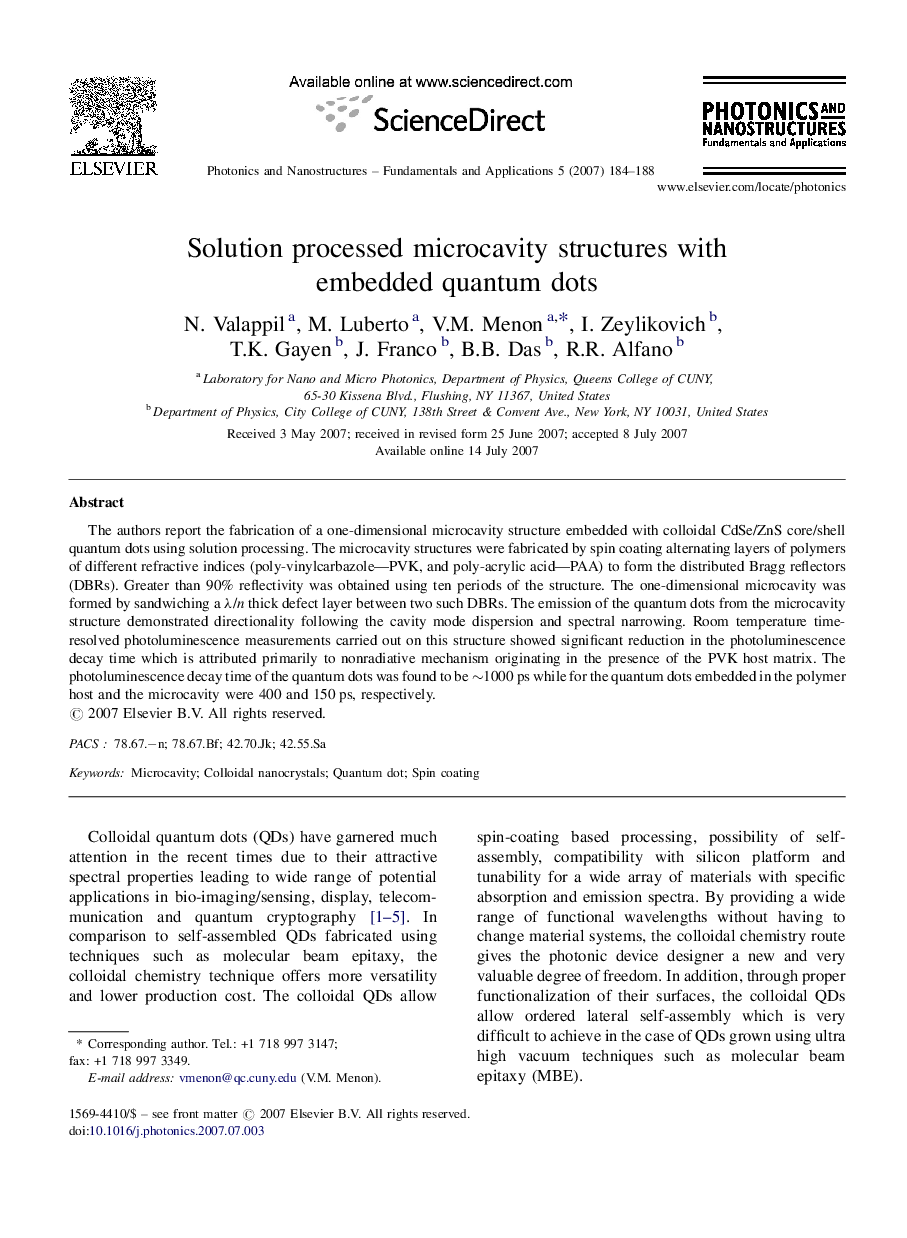| کد مقاله | کد نشریه | سال انتشار | مقاله انگلیسی | نسخه تمام متن |
|---|---|---|---|---|
| 1543099 | 997431 | 2007 | 5 صفحه PDF | دانلود رایگان |

The authors report the fabrication of a one-dimensional microcavity structure embedded with colloidal CdSe/ZnS core/shell quantum dots using solution processing. The microcavity structures were fabricated by spin coating alternating layers of polymers of different refractive indices (poly-vinylcarbazole—PVK, and poly-acrylic acid—PAA) to form the distributed Bragg reflectors (DBRs). Greater than 90% reflectivity was obtained using ten periods of the structure. The one-dimensional microcavity was formed by sandwiching a λ/n thick defect layer between two such DBRs. The emission of the quantum dots from the microcavity structure demonstrated directionality following the cavity mode dispersion and spectral narrowing. Room temperature time-resolved photoluminescence measurements carried out on this structure showed significant reduction in the photoluminescence decay time which is attributed primarily to nonradiative mechanism originating in the presence of the PVK host matrix. The photoluminescence decay time of the quantum dots was found to be ∼1000 ps while for the quantum dots embedded in the polymer host and the microcavity were 400 and 150 ps, respectively.
Journal: Photonics and Nanostructures - Fundamentals and Applications - Volume 5, Issue 4, November 2007, Pages 184–188